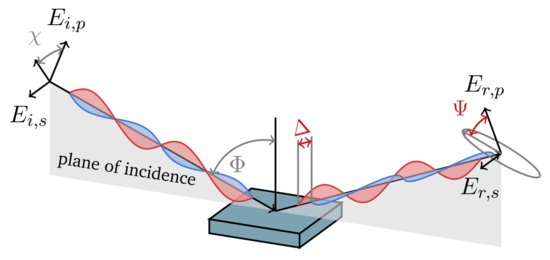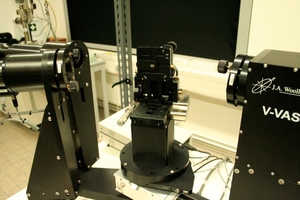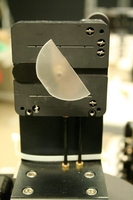Spectroscopic ellipsometry lab
Spectroscopic ellipsometry is a powerful experimental method which is able to find out about the complex dielectric function of any material. Actually measured are the so-called ellipsometric angles Ψ and Δ under a variable and selectable angle of incidence Φ. In case of a semi-infinite, perfectly smooth sample, these parameters are sufficient to directly calculate the dielectric function. For real-world applications, the layer structure of the sample should be known as exact as possible. Very low surface roughness is necessary.

In the infrared spectral region (roughly from ω=250 up to 7500cm-1), we use an ellipsometer based on a Fourier-transform infrared spectrometer (basically a Michelson interferometer), in the visible to ultraviolet spectral range (from hω=0.5 to 6.5eV) a grating monochromator is used. Both spectral ranges overlap.


We routinely investigate anisotropic samples, e.g. wurtzite III-nitrides, even in semipolar surface orientations. If higher photon energies than 6.5eV are needed, we have access to the only synchrotron-based spectroscopic ellipsometer worldwide in cooperation with ISAS and PTB. There, energies up to 40eV can be reached.




